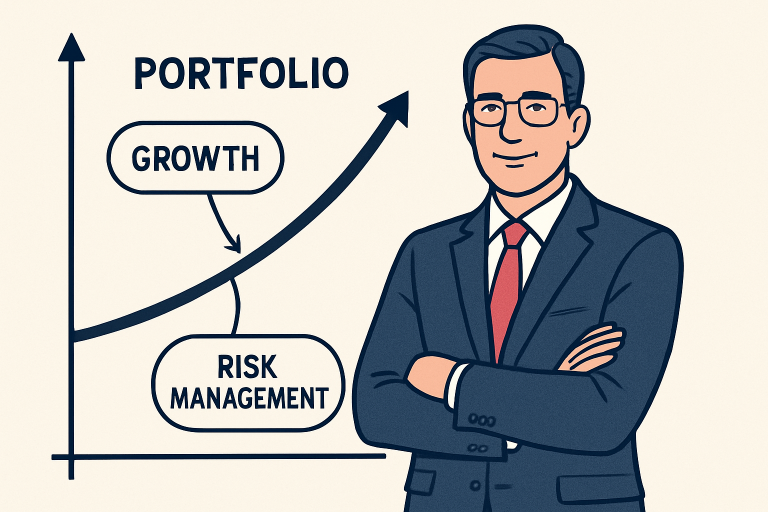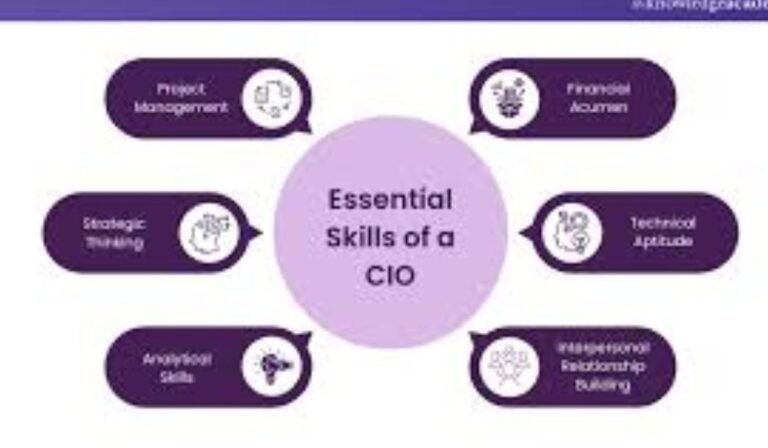The evolving financial landscape places the Chief Investment Officer (CIO) at the core of any organization’s ability to achieve growth, manage risk, and sustain long-term financial health. Today’s CIOs don’t just pick investments—they enact vision, shape policy, and ensure that every financial decision aligns with larger organizational goals.
By mastering a nuanced blend of analytics, leadership, and communication, leading CIOs consistently drive results. Discover what sets apart today’s most effective CIOs, like those highlighted in Jeff Van Harte Chief Investment Officer, and the multifaceted strategies they employ for investment success.
A CIO’s pivotal role is not just about maximizing returns but about crafting resilient strategies to prosper through volatility, adapt to market changes, and communicate transparently with stakeholders. As the financial climate shifts with new pressures—from regulatory reform to digital transformation—organizations with visionary CIOs have a clear edge in competitiveness and stability.
Beyond steering portfolio growth, the modern CIO is charged with fostering a culture of innovation while continuously aligning investment frameworks with business objectives. Their ability to transform uncertainty into opportunity is a testament to the evolving role.
As organizations place greater emphasis on long-term sustainability and prudent risk management, a high-performing CIO becomes an invaluable asset for any business that aims to thrive in global markets.
Strategic Decision-Making Leadership
CIOs act as the engine behind an organization’s investment strategy. Every decision is rooted in strategic foresight and the careful balancing of risk with reward. Formulating tailored investment policies, they take into account each organization’s unique risk appetite, objectives, and regulatory environment.
By sharply identifying diversified opportunities across asset classes—stocks, bonds, alternatives, and more—they optimize portfolio performance while ensuring decisions are oriented toward long-term vision versus short-term gain. According to The Economic Times, effective CIOs also excel in navigating complexity with precision, applying strategic leadership that ensures decisions are informed, agile, and forward-looking.
Successful CIOs are responsible for translating corporate strategy into dynamic, actionable investment policies. This includes adapting investment mandates as the organization’s trajectory evolves and maintaining alignment with evolving financial goals. Their leadership ensures that not just the investment team, but the entire organization, understands how and why certain financial moves support organizational growth.

Risk Management Expertise
Central to a CIO’s effectiveness is mastery of risk diagnostics and mitigation. Modern CIOs rigorously assess internal and external risks—such as geopolitical instability, economic cycles, and emerging market threats.
They develop robust frameworks for identifying risks, leveraging scenario analysis, stress-testing portfolios, and employing hedging strategies where appropriate. Regular review and recalibration of risk management processes are essential to ensure the organization is prepared to weather market shocks and capitalize on emerging opportunities.
Through comprehensive risk management frameworks, CIOs safeguard organizations from downside shocks while also empowering investment teams to pursue returns in a disciplined manner.
Optimizing Portfolio Performance
Optimizing returns while managing risk is an art and a science facilitated by deep market knowledge and data analytics. Effective CIOs leverage cutting-edge technology and analytics to track performance and spot trends in real-time.
Maintaining a balanced portfolio that reflects market realities, they pursue investments that support both growth and protection. This approach encompasses regular rebalancing, performance attribution analysis, and enhancement strategies that enable consistent outperformance relative to benchmarks.
Market trends are dynamic, so CIOs must remain agile, making informed, real-time decisions to pivot portfolios as conditions dictate. Harnessing big data, AI, and proprietary analysis, savvy CIOs can quickly identify underperforming assets and optimize for both short-term gains and long-term sustainability.
Influence on Long-Term Financial Health
A CIO’s impact can be measured in more than quarterly returns—it’s about sustaining financial viability and corporate mission. Strategic decisions focused on sustainable growth, organizational resilience, and capital preservation underpin the long-term financial well-being of any enterprise.
CIOs keep their eyes on broader trends, demographic shifts, globalization, and technological innovation to ensure investment choices are future-proof. According to Investopedia, evaluating financial health is central to understanding how well an organization can navigate risks and seize opportunities, which reinforces the CIO’s role in steering sustainable performance.
Adaptability is fundamental, as the financial landscape is in constant flux. By prioritizing flexibility and steadily evolving strategies, CIOs create an environment where businesses can withstand downturns and thrive in upswings. The alignment between investment actions and the organization’s overarching objectives fosters confidence among stakeholders and enhances the reputation and competitiveness of the company.
Navigating Market Volatility
Markets are inherently unpredictable, and volatility is expected. CIOs employ specialized strategies—such as tactical asset allocation, portfolio hedging, and opportunistic investing—to both manage risk and exploit market dislocations. By remaining calm and strategic during turbulence, they preserve capital while also seeking to generate alpha during times of market dislocation.
Preparation is key. Regularly back-testing investment strategies and preparing for multiple scenarios ensures that CIOs lead with conviction and guide organizations steadily through market disruptions. Their ability to see beyond the headlines and act rationally positions the organization for outperformance, even when markets are unsettled.
Adaptability in Dynamic Markets
Financial innovation, disruptive technology, and globalization continually reshape markets. Leading CIOs proactively seek out new information—leveraging industry research, economic data, and forward-looking analytics. By adopting emerging technologies and fostering a culture of learning, they ensure that investment teams aren’t just responsive to change, but ahead of it.
Adaptability also means regularly reassessing processes, integrating new asset classes, and responding fluidly to shifts in regulation and investor appetite. Empowered by continuous improvement, organizations led by adaptable CIOs are better positioned to capture growth and mitigate losses.
Stakeholder Communication
Effective communication is the bridge between the investment function and senior management. CIOs articulate complex investment topics clearly to varied audiences, from senior executives and board members to external investors. Transparency around performance, risk exposures, and strategic shifts is non-negotiable.
Engaging stakeholders in dialogue and openly sharing insights about strategic direction earns and maintains trust. As stewards of financial futures, CIOs must demonstrate both expertise and integrity in every exchange, ensuring that all parties are aligned in pursuit of the company’s long-term goals.
Conclusion
The modern Chief Investment Officer balances vision, analytics, and leadership to drive consistent investment success. Through strategic decision-making, disciplined risk management, optimized portfolio oversight, and exceptional stakeholder engagement, CIOs are indispensable in today’s competitive markets.
Their nuanced approach, shaped by both data and judgment, enables organizations to thrive in uncertain times, seize new opportunities, and maintain long-term financial stability.
